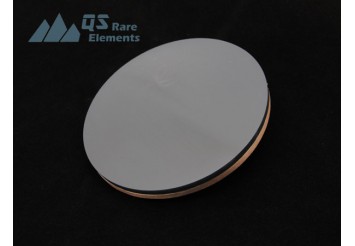An important semicon material: IGZO
Introduction
Indium Gallium Zinc Oxide (IGZO) thin film is a unique and innovative compound semiconductor that has revolutionized the display industry due to its immense advantages over traditional silicon-based transistors in terms of performance, speed, and cost-effectiveness. It is finding widespread industrial and commercial applications ranging from touch panels for liquid crystal displays, organic light-emitting diodes, OLEDs, transparent conductive films to thin-film transistors (TFTs). IGZO was initially discovered by a team of scientists at Tokyo Institute of Technology led by Professor Hideo Hosono in 2003, who found that the Indium-Tin Oxide (ITO) thin film properties could be greatly improved by replacing Tin atoms with Zinc.
IGZO thinfilm
To produce IGZO thin film, a process called sputtering is employed. Sputtering is a physical vapor deposition process where ions are bombarded on a target material causing it to eject atoms that land on a substrate forming a thin film. For IGZO, sputtering is done in a high vacuum chamber fitted with a gas inlet where the desired composition of the target material is placed. The target then gets bombarded by plasma generated from high voltage discharge causing atoms to eject which deposit to form the desired thin film. As compared to other alternatives, sputtering affords uniform, high-quality, & high-purity thin films with controllable thickness using less complicated equipment than chemical methods.

An IGZO sputter target
The major customers of this material include some of the world's leading companies in the display industry such as Sharp, Sony, LG, Samsung, and Apple. Samsung Electronics was one of the major pioneers in mass-production of IGZO TFT-LCDs in 2012, followed by Sharp and LG Display. Today IGZO supplies their products for various applications in display technology such as smartphones, tablets, ultra-thin laptops, and televisions. Due to its fast response times, low power consumption, high transparency, and ability to withstand rapid display image updates without interference, IGZO is increasingly being employed extensively in display industries.
Future of IGZO
Recently, researchers have been investigating and improving the use of IGZO in various electronic devices. A group of scientists from Nagoya University discovered that incorporating nitrogen into the IGZO material enables faster electron mobility, leading to faster refresh rates for display applications. Also, researchers from the Korea Advanced Institute of Science and Technology implemented AI algorithms to develop a methodology that enhances the functionality of IGZO-based photo detectors, increasing their accuracy and efficiency. Moreover, Japanese researchers from Okayama University achieved a breakthrough regarding the stability of IGZO transistors, the most crucial component of any electronic device that determines the strength of electric currents. they added nitrogen into the igzo thin film to adjust its concentration and significantly reduce electronic fluctuations, leading to increased stability in the transistors.

Conclusion
IGZO thin film has tremendous potential as a transparent conductor material for future electronic applications. the development of this material dates back to the early 2000s, but recently, with continuous research and advancement, its use has become widespread, especially in display technology, where its versatility matches the demand of the market. with major giants like apple
